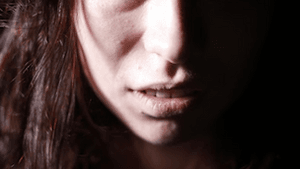Stay in the Loop
BSR publishes on a weekly schedule, with an email newsletter every Wednesday and Thursday morning. There’s no paywall, and subscribing is always free.
Toil and trouble
Philly Fringe 2016: Queen Mab's Men's '...they'll be callin' us witches'

Bala Cynwyd native Molly Lang’s new play “…they’ll be callin’ us witches” reveals the teenage accusers who sparked the Salem witch trials and inspired Arthur Miller’s The Crucible as actual witches — and also as actual teenage girls.
Each has been traumatized by their misogynistic society, and sees dabbling in the practices of Tituba (Sierra D. Leverett), a Caribbean-born servant, as an opportunity for freedom and power. Anna Clare Kerr plays Mary, who works for John Proctor’s wife but feels a special connection to Proctor. Lang plays Abigail, who carries a knife and pushes her friends into the dark arts. Terilyn Eisenhauer is Mercy, gruesomely scarred from her employer’s beatings, who brings a gory pig’s head for their rituals. Lizzie Kehoe, as Lizzie, seems a wild, grunting animal, her face covered in disfiguring pox sores — until someone or something else speaks through her. Students and graduates of New York University’s Tisch School of the Arts, they all give committed, intense performances.
The girls want to burn things down: their masters’ houses, the entire town. They’ve been hurt so much that only fire will make things right.
Witchcraft and stagecraft
Their chanting and dancing around a campfire in the woods seems like child’s play until that being speaks through Lizzie, leading to outpourings of the awful things they’ve suffered. We’re on their side, but what will revenge cost them? Lang doesn’t portray them only as victims; they’re young women with dreams and ambitions thwarted by their station and society. Mercy’s realization that she’ll never be loved or cherished like her employers’s infant is as heartbreaking as it is frightening.
The stage magic of Amoroso’s production isn’t so successful. Performing in black dresses on a bare black stage with just an abstract netting sporting branches behind them to suggest the forest, the show is grimly dark. Katherine Craig lights the play in broad strokes, overusing red. Amoroso stages too much floor action downstage, making it difficult to see for anyone not in the first row.
Lang’s script, composed of short scenes separated by blackouts, would be aided by music or sound during the production’s many scene changes, but we’re left in awkward silence until a barrage of sound (including some lines from Macbeth’s witches) near the hour-long play’s end. The director’s self-described “Pina Bausch aesthetic,” visible in a few movement-augmented scenes, might have helped with this too.
Missed messages
Most distractingly and disappointingly, “…they’ll be callin’ us witches” stops rather than ends. In fact, the opening night audience didn’t know it was over until someone in the back, presumably a production member or friend, started frenetic applause, and we all sheepishly joined in. The abrupt ending didn’t seem like an attempt at some effect; rather, it just felt careless.
Ultimately, “…they’ll be callin’ us witches” doesn’t make the strong feminist statement the playwright and director seem to have intended, which is unfortunate; the building blocks are there. Combined with the girls’ modern styles of speaking — ironic, given the title’s attempt to capture something more colloquial — “…they’ll be callin’ us witches” feels like a play in need of more development, and some stage magic.
What, When, Where
…they’ll be callin’ us witches. By Molly Lang, Pati Amoroso directed. Through September 15, 2016 at the Arcadia Stage of the Arden Theatre, 40 North Second St., Philadelphia. (215) 413-1318 or fringearts.com.
Sign up for our newsletter
All of the week's new articles, all in one place. Sign up for the free weekly BSR newsletters, and don't miss a conversation.

 Mark Cofta
Mark Cofta